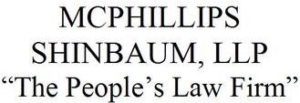Not Too Old to Work — Proving Age Discrimination
A recent decision by a federal appeals court highlights the process of proving an age discrimination case in Alabama.
In early 2008, 71-year-old Solomon Sims was hired as a supervisor in a company that organized transport and custody for the federal prison service. Eight months later, one of the vice presidents of his company instructed Sims’ immediate superior to fire two supervisors in a reduction in force, or RIF. Perkins analyzed the reports and the performance data of the supervisors. He asked all of the supervisors whom they thought should be fired. Unanimously, they chose Sims. When Perkins told Sims he would be laid off, he offered him a different job in the company, which Sims refused. At a certain point in their conversation, they discussed Sims’ and Perkins’ relative ages — Perkins was surprised that he was ten years younger than Sims.
Sims sued in federal court under the Age Discrimination in Employment Act of 1967, but when the federal court in Atlanta ruled against him, he took his case to the Eleventh Circuit Court of Appeals, which is the federal appeals court for Alabama, Florida, and Georgia.
The court ruled against Sims, and in doing so, emphasized important rules relating to proving age discrimination that apply to lawsuits brought in Alabama.
Bringing direct evidence is the most effective way to prove an age discrimination case. If the employer says, “We just can’t stand having old people like you around here, here’s your pink slip,” there is not much need for circumstantial evidence. Very few age discrimination cases are so clear cut, however, and most rely on circumstantial evidence.
In a case with only circumstantial evidence, there are three stages to proving age discrimination:
- The plaintiff must make a prima facie or first-blush case that the employer discriminated against the plaintiff because of age
- The defendant, to protect the company, must state a “legitimate, non-discriminatory reason for the challenged employment action.”
- The plaintiff has an opportunity to show why the defendant’s legitimate reason is in fact not legitimate, but a cover-up for age discrimination.
In Sims’ case, the court found that the defendant showed legitimate reasons to lay Sims off. These included the need to save money on Sims’ work project and Sims’ poor performance compared to the other supervisors. There was also little or no evidence that these legitimate reasons were any type of cover-up for age discrimination. Indeed, Sims’ superior made his decision to fire Sims thinking that he, not Sims, was the oldest person in the company. Further, Sims was offered a different job.
Age discrimination cases are often very tricky to pursue. Defendants are rarely forthcoming with their intentions. Proving their reasons for employment discrimination requires a great deal of preparation and strategy. If your employer has discriminated against you, contact us for a review of your case to see how we can help you achieve justice.











